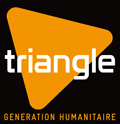AREA OF EXPERTISE

Food security and livelihood

AREA OF EXPERTISE

Food security and livelihood
FUNDING
Yemen is one of the low-income food-deficit countries (LIFDCs). 40% of the population is undernourished, mainly because of the limited resources of households that do not allow them to buy food. In addition, rural areas bear the consequences of policies that have encouraged intensive agriculture at the expense of local agriculture. According to the World Food Programme (WFP - 2010), 32% of the Yemeni population is affected by food insecurity (one in three is undernourished), 12% of the population is in a state of severe food insecurity, and one child under 5 years out of ten is affected by acute malnutrition, often transmitted by his mother (25% of women in age to reproduce are malnourished).
Most other indicators related to poverty (83% of the rural population live below the poverty line) are dramatically significant: access to drinking water (32% in rural areas) or access to sanitation facilities (23% in rural areas).
The two districts of Mayfaah and Rudoom are among the most affected in terms of food insecurity. The area targeted is isolated and characterized by the poverty of its population and its dependence on agriculture, livestock and fishing. The geographical, climatic and environmental conditions are particularly difficult and add to the lack of government action on health and education, as well as to the low economic development of the area.
This program aims to help increase food production through the construction or rehabilitation of protection structures against floods and spate irrigation
Rehabilitation of canals
Livestock
Agriculture